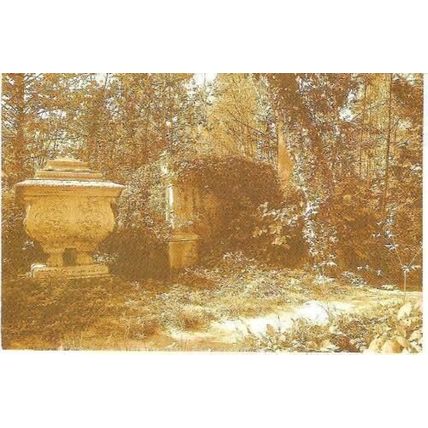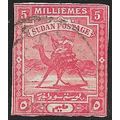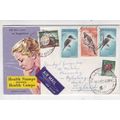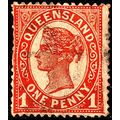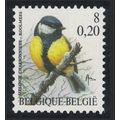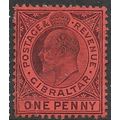London - Stoke Newington -Tomb of John Jay Abney Park Cemetery -postcard c.1990s
- Condition : Used
- Dispatch : 2 Days
- Brand : None
- ID# : 215302502
- Quantity : 1 item
- Views : 140
- Location : United Kingdom

- Seller : justthebook (+1699)
- Barcode : None
- Start : Tue 17 Jan 2023 08:07:27 (EDT)
- Close : Run Until Sold
- Remain : Run Until Sold
Checks/Cheques
 for 1 item(s) edit
for 1 item(s) edit
Shipping Calculator
More Listings from This Seller view all
Seller's Description
- Postcard
- Picture / Image: The Tomb of John Jay, Abney Park Cemetery, Stoke Newington
- Publisher: Abney Park Cemetery Trust, c.1990s
- Postally used: no
- Stamp: n/a
- Postmark(s): n/a
- Sent to: n/a
- Notes / condition:
Please ask if you need any other information and I will do the best I can to answer.
Image may be low res for illustrative purposes - if you need a higher definition image then please contact me and I may be able to send one. No cards have been trimmed (unless stated).
------------------------------------------------
Postage & Packing:
Postage and packing charge should be showing for your location (contact if not sure).
No additional charges for more than one postcard. You can buy as many postcards from me as you like and you will just pay the fee above once. Please wait for combined invoice. (If buying postcards with other things such as books, please contact or wait for invoice before paying).
Payment Methods:
UK - PayPal, Cheque (from UK bank) or postal order
Outside UK: PayPal ONLY (unless otherwise stated) please. NO non-UK currency checks or money orders (sorry).
NOTE: All postcards are sent in brand new stiffened envelopes which I have bought for the task. These are specially made to protect postcards and you may be able to re-use them. In addition there are other costs to sending so the above charge is not just for the stamp!
I will give a full refund if you are not fully satisfied with the postcard.
----------------------------------------------
Text from the free encyclopedia WIKIPEDIA may appear below to give a little background information (internal links may not work) :
*************
Abney Park cemetery is one of the Magnificent Seven, London cemeteries.
Abney Park in Stoke Newington, in the London Borough of Hackney, is a historic parkland originally laid out in the early 18th century by Lady Mary Abney and Dr. Isaac Watts, and the neighbouring Hartopp family.
In 1840 it became a non-denominational garden cemetery, a semi-public park arboretum, and an educational institute, which was widely celebrated as an example of its time. A total of 196,843 burials had taken place there as of the year 2000.[2] It is a Local Nature Reserve.[3][4]
The official address of Abney Park is Stoke Newington High Street, N16. The main gate is at the junction of this street and Rectory Road, with a smaller gate on Stoke Newington Church Street. The park lies within the London Borough of Hackney.
The cemetery is named after Sir Thomas Abney, who served as Lord Mayor of London in 1700–01. The manor of Stoke Newington belonged to him in the early 18th century and his town house, built in 1676, stood on the site of the present cemetery until its demolition in the 1830s.[5]
In 1840, Abney Park opened as a model garden cemetery, a pioneering non-denominational place of rest. Its approach was based on the Congregational church's role in the London Missionary Society (LMS), whose fundamental principle was to develop a wholly non-denominational exemplar. It also drew on American burial ideas, specifically Mount Auburn in Massachusetts. Details of the Abney Park Cemetery Company can be found in the diaries of William Copeland Astbury (volumes covering 1831–48)[6]
At first there were many links between Abney Park Cemetery and the LMS but this nonconformist (and in particular Congregationalist) period came to a close in the early 1880s when a strictly commercial general cemetery company was formed and the land at Abney Park was made over to the new enterprise. Though the park had not been formalised in 1840 as a cemetery through Act of Parliament or consecration, and Church faculty law never applied, burial ground use, had, by the 1880s, already come to predominate over the wider landscape, access and educational objects of its founders.
The founders' financial and legal structure, adapted from the model developed for garden cemeteries in the America by City solicitor George Collison, aimed to establish a joint stock corporation managed by trustees. The trustees would be appointed by the members (those buying plots). Under the trust deed, the founders sought to preserve the park in perpetuity. The weakness of the model lay in the detail however, but this was not evident for thirty years. An eventual successful prosecution by the Crown, ruled that despite their unusual business model and the way in which plots were seemingly sold as freehold land, the legal arrangements were actually inadequate to achieve a different status from any other commercial cemetery, either for the company or the registered keepers of plots. In consequence, company income could not be held in trust for the park, but was to be treated as for any other commercial profit-making company and taxed accordingly.
Eventually sold on the open market to a wholly commercially minded general cemetery company in the 1880s, established with a similar name, three new cemeteries were founded in London's suburbs or nearby countryside. From then onwards standardised park-like landscaping principles came to be applied at Abney Park, replacing much of the unique arboretum planting. Air pollution also took its toll, affecting the conifer walks. After the First World War, path infill began to be practised; a situation that became severe in the 1950s and was continued into the 1970s, when the commercial cemetery company went into liquidation.
In 1978, apart from one forecourt building, the park passed to the local council as a burial ground and open space subject to the Local Authorities Cemeteries Order of 1977. For the next twenty-one years, there being only a small number of residual burial and monuments rights, the Council worked with local groups and relatives to accommodate these rights, and exercise discretion to allow occasional courtesy burials, where families had previously held deeds from the cemetery company; but by and large nature was allowed to take its course.
Abney Park was included on the Heritage at Risk Register in 2009, as one of Britain's historic parks and gardens at risk from neglect and decay.[7] Although the level of malicious damage is kept low by the conspicuous presence of staff and volunteers of the Abney Park Trust when maintaining the park; by frequent arts and environmental events promoted by the Trust; and by community safety initiatives involving the police and their community support officers; nevertheless, over time it has taken its toll, leading to the current 'at risk' designation. The roof slates and roof flashings of the Abney Park Chapel have been damaged by unauthorised climbing and theft at times when the park was left unsupervised and unlocked overnight, and this has resulted in water seepage into the chapel walls which is now causing serious problems to the whole building. Similarly, from time to time, some sections of boundary wall become too weak due to people climbing over them, and decay has set in. However these matters could be put right and the park is a popular place to visit, with a range of educational, training and cultural events and an annual summer open day. It is a designated Local Nature Reserve and Conservation Area. Apart from the South Lodge extension on the forecourt, Abney Park's freehold is owned by the London Borough of Hackney. The park is situated near Stoke Newington High Street, London N16, and it is leased to the Abney Park Trust. It occupies 12.53 hectares (31.0 acres),[8] which includes a nature reserve, a classroom, a visitor's centre and a central chapel which is disused. The park is normally opened by the Trust for free public access on weekdays and weekends from about 9.30 am to 5 pm, and for access or events agreed with the Trust at all other times.
One of the "Magnificent Seven" parkland cemeteries created in the early Victorian period, albeit set out in an entirely different way to the others and with somewhat wider purposes, Abney Park features an entrance designed by William Hosking FSA in collaboration with Joseph Bonomi the Younger and the cemetery's founder George Collison II. This frontage was built by John Jay in the then increasingly popular Egyptian Revival style, with hieroglyphics signifying the "Abode of the Mortal Part of Man": a venture too far into the architecture of the African continent for Augustus Pugin, who pilloried the idea, hoping no-one would repeat such a radical departure from "good" Christian gothic design (see illustration for Grounds of a Quaker School). A similar criticism had previously been made when the first Egyptian-style entrance to a western cemetery had been constructed at Mount Auburn Cemetery in the 1830s, on which Abney Park Cemetery was partially modelled. By contrast, figures who appreciated the composition complimented Hosking and Bonomi on their scholarly frontage design; an arbiter of design taste, John Loudon, described it as a "judicious combination of two lodges with gates between".
Abney Park has a claim to be the earliest complete design for a permanent "Egyptian Revival" entranceway at a cemetery anywhere in the world. The gateway at Mount Auburn Cemetery, from which it took its inspiration, was at that time still a temporary structure, being made of dusted wood and sand; its permanent design was not built until two years after Abney Park opened. In England there were already some examples of the use of Egyptian Revival architecture on a small scale, including one example of a small gate installed at a cemetery for Nonconformists near Sheffield in 1836. However, Abney Park Cemetery became the first to employ the style for cemetery buildings, and also the first to introduce it for a complete entrance design.
At Abney Park the use of motifs not associated with contemporary faith served a profound purpose, since it was consciously opened as the first wholly nondenominational garden cemetery in Europe. True, other garden cemeteries sometimes used the term loosely, meaning only that they had laid out more than one denominational area or built more than one chapel. Abney Park Cemetery was the first to be laid out with "no invidious dividing lines" separating the burial areas of one faith or religious group from any other, and even its one chapel, the Abney Park Chapel, a feast of Puritan or northern European brick gothic yet with ample stone dressings and a little neoclassical design woven into its early Dissenting Gothic design style, had but one central chamber for the common use of all, and but one entrance. As such it was the first nondenominational cemetery chapel in Europe. William Hosking, in being handed the task of achieving this vision, became the first architect to design a nondenominational cemetery chapel in Europe. Underpinning this was a unique legal basis in comparison with the other garden cemeteries of its period; Abney Park was not set aside solely for cemetery use by Act of Parliament, and was not formally consecrated as burial land. Perhaps more so than any other it was entitled to be considered as a park as well as a cemetery.
Today it is accommodating this wide role again; burial rights ceased when the private company closed in 1978, enabling the park to now facilitate a wide range of projects in the arts, education, nature conservation and walking/recreation, besides offering new memorial trees and benches where ashes are scattered, and the occasional discretionary or courtesy burial.
Abney Park was unique in being the first arboretum to be combined with a cemetery in Europe; offering an educational attraction that was originally set in a landscape of fields and woods, some distance from the built-up boundary of London. Its 2,500 trees and shrubs were all labelled, and arranged around the perimeter alphabetically, from A for Acer (maple trees) to Z for Zanthoxylum (American toothache trees).
The emphasis on an educational landscape, as opposed to a purely aesthetic, visually attractive picturesque, drew partly on a simplified version of John Loudon's 'Gardenesque' concept, and applied something akin to this, but with a unique alphabetical approach, and no structural mounding, to a picturesque cemetery design. It was much admired by John Loudon, who described Abney Park Cemetery as "the most highly ornamented cemetery in the vicinity of London", albeit that he favoured a more formal and classical approach to garden cemetery design as a general rule and, in 1843 developed design principles for such an approach.
At the Stoke Newington cemetery the botanical planting was carefully sited since the design sought to do as little as possible to change the existing picturesque parkland. This careful approach drew on that used at Mount Auburn Cemetery near Boston where Dearborn had emphasised the compatibility of horticulture and even an experimental garden with a cemetery, leading to the opening of a cemetery supported by the Massachusetts Horticultural Society; one that succeeded in establishing a picturesque landscape coupled with botanical garden specimens and an adjoining scientific garden. There were important differences, however; the New England cemetery had benefited from a more sylvan setting than that of Abney Park, and a much larger estate. Nonetheless, the ties were evident. The founding directors of the Abney Park project were all Congregationalists, who together with other nonconformists had strong links with their brethren in the new world, to where they had emigrated in search of religious freedom. George Collison, Abney Park Cemetery's company secretary, and the key force behind its radical design, recorded his visit to, and impressions of, Mount Auburn Cemetery, in a book published to coincide with the opening of the Stoke Newington cemetery. It also contains a complete list of all the arboretum species and varieties planted at Abney Park.
The concept of the arboretum -and indeed also a rosarium – was inspired by George Loddiges FLS FZS, a local Hackney nurseryman who became a small shareholder in the cemetery company and was appointed to lead its landscape design, planting and educational labelling, to complement William Hosking's layout and building and engineering (drainage) scheme. The pair worked closely as a design team under the guiding influence of the third designer George Collison, who represented the client company both as its solicitor and principal learned visionary. Loddiges' earlier experience in designing an A to Z arboretum at his Mare Street nursery, and possession of one of the largest ranges of trees and shrubs then grown for sale in Britain, ensured success.
The overall effect was to establish Abney Park as the most impressively landscaped garden cemetery of its period. However regrettably, Loddiges Nursery closed in the early 1850s and thereafter maintenance of the trees and shrubs and of their botanical labels, was impaired. Today Loddiges' work is of unparalleled significance to landscape design, being recognised as of European importance. Abney Park was the first London cemetery to be invited to join the Association of Significant Cemeteries in Europe (ASCE) and it is the only surviving example of an English landscape designed by George Loddiges FLS FZS.
Listing Information
| Listing Type | Gallery Listing |
| Listing ID# | 215302502 |
| Start Time | Tue 17 Jan 2023 08:07:27 (EDT) |
| Close Time | Run Until Sold |
| Starting Bid | Fixed Price (no bidding) |
| Item Condition | Used |
| Bids | 0 |
| Views | 140 |
| Dispatch Time | 2 Days |
| Quantity | 1 |
| Location | United Kingdom |
| Auto Extend | No |


